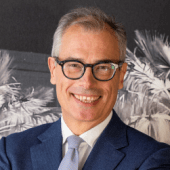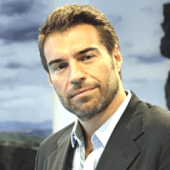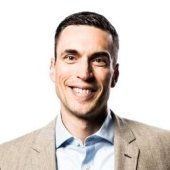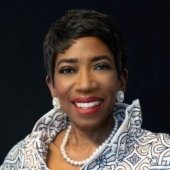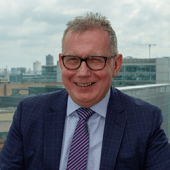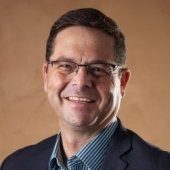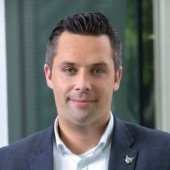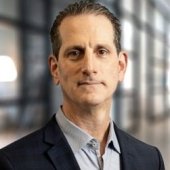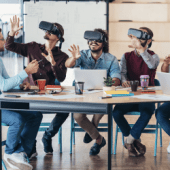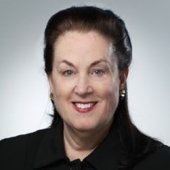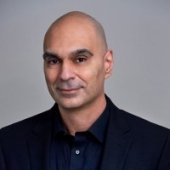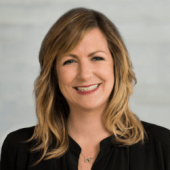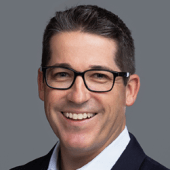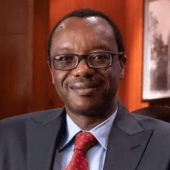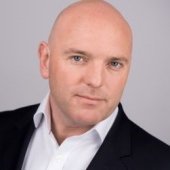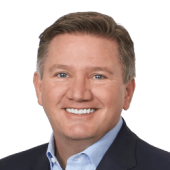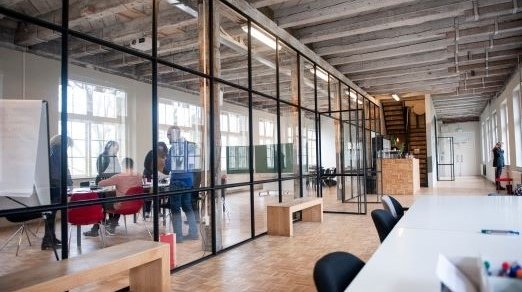Career design and the future-focused workforce with Erica Sosna, CEO of Career Matters
IN BRIEF
- 4:05 – I think it’s a very exciting time to really redesign for what is the ultimate environment for high performance for the work that we do now, the folks that we have and for the things that they want. And will there, as a result of that, be migration and change? Sure.
- 14:40 - The career equation says this: First of all, everyone wants to work in an area of strength. We all want to play to our skills and our strengths. What drives fulfillment is more opportunities to do what I do best.
- 23:30 – Part of why you’ll see is attrition, whether it will be a Great Resignation waits to be seen, but an attrition certainly over the next decade or so is because people have decided that those environments are hostile to their humanity. I think they’ve been hostile for quite a long time, and I don’t think that’s been deliberate. I think it’s just the way businesses have evolved… and we haven’t been paying attention to how that affects the human.
In this VISION by Protiviti podcast, Joe Kornik sits down with Erica Sosna, founder of Career Matters, a boutique firm that empowers employees to own their career. Sosna also designs leadership programs and career development for CEOs of top global companies such as Amazon, Capital One, HSBC and Mastercard. Sosna is also an award-winning speaker on career design and the future-focused workplace, and her Career Equation Method has become a go-to career design model for clients. Erica’s thought leadership on where the global trends for virtual teams, digital nomad lifestyles and the end of work as we know it, has been featured in leading publications.
CAREER DESIGN AND THE FUTURE-FOCUSED WORKFORCE WITH ERICA SOSNA, CEO OF CAREER MATTERS - Audio transcript
Joe Kornik: Welcome to the Vision by Protiviti podcast. I’m Joe Kornik, director of brand publishing and editor-in-chief of Vision by Protiviti, where we put megatrends under the microscope to examine the big topics that will impact the C-suite and executive boardrooms worldwide.
Today, we’re exploring the future of work, and I’m happy to be joined by my guest, Erica Sosna. Erica is the founder of Career Matters, a boutique consultancy that empowers employees to own their career and designs leadership programs and career development for CEOs for top global companies such as Amazon, Capital One, HSBC and MasterCard. Erica is an award-winning speaker on career design and the future-focused workplace, and her powerful and practical career-equation method has become the go-to career-design model for her clients. Erica’s thought leadership on the global trends for virtual teams, digital-nomad lifestyles, and the end of the world — rather, the end of work — as we know it, has been featured in leading publications and on LinkedIn. Erica, I’m thrilled you are with me today. Welcome.
Erica Sosna: Thank you for having me. I’m excited.
Joe Kornik: I just mentioned there in that intro that it’s the end of the world as we know it — and I feel fine. I just couldn’t resist that. I’m dating myself a bit, of course, with that reference. And would I love to say it’s the end of the pandemic as we know it. Maybe we’re getting there, little by little, but I wanted to start our conversation today around how the pandemic impacted our idea of career and career choices — the idea that people have become less willing to settle for work that doesn’t work for them.
Erica Sosna: I used to have a slide at the beginning of my big keynotes, which had the up-and-coming cutting-edge future trends in work, and the pandemic has blown my slide. All of the things that seem to be emerging trends have now accelerated, as so much does in crisis environments. Let’s start by unpacking what has accelerated, what’s changed, why it’s the end of work as we know it — hopefully, not the world, but work — and then we’ll look at the pieces for reconstructing out the other side.
One of the things that was always going to be a major trend, that I was just waiting for everyone to pick up on, was the flexibility that technology has facilitated about where people are working from. Now, of course, there are still plenty of instances and plenty of roles where being in person is indispensable, and for a long time, I’ve been wondering, how long are these big offices here in London, in the City, how long are they going to be filled?
Prior to the pandemic, there were already plenty of companies globally doing telecommuting, outsourcing, remote working and virtual teaming. I know that, because I was part of those — I haven’t worked full-time in person for 20 years — but also, because my clients were telling me that. How do we build an effective virtual team with people across different cultures, different locations, different time zones, who may not have the chance to meet in person very often? So, it’s no news to people that, of course, people are now expecting to be able to have a conversation where appropriate about the hybrid model — about what that looks like for you.
One of the first pointers for the C-suite is to say, “You need a point of view. You don’t have to have the whole thing worked out, but you do need a point of view.” There will be some companies that are saying, “We are an in-person, very collaborative business, so wherever possible, we do want to see people with a higher level of frequency.” There’ll be other companies that say, “You know what? We’re pretty established at our remote-teaming collaboration, and it’s worked well for us in many ways, and so we’re going to move more in that direction.”
There isn’t a one-size-fits-all. There isn’t a rulebook and playbook that says, “It must be this way,” but it’s therefore a very exciting time to redesign what is the ultimate environment for high performance for the work we do now, for the folks that we have and for the things that they want. And will there be, as a result of that, migration and changes? Sure. Some people will say, “Losing the commute has made all the difference in the world to me — I’m never going back to that,” and therefore, looking for something that they can walk to, or something they can work remotely in. Others will be saying “I’m so desperate to spend time with people — and see their feet for the first time in the last two years — and have that connection and conviviality, but if you tell me that you’re going to 100% remote indefinitely, this is probably not the fun for me.”
Joe Kornik: You mentioned the office, and I feel like that’s an interesting aspect of all this, and I’ll continue on that earlier theme: Is it the end of the office as we know it? What are your thoughts about the future of the office, its functionality, its design? What will the office look like in a decade?
Erica Sosna: So many different things to think about here. The first thing is that collaboration spaces of various kinds have been in existence and running very successfully, particularly for freelancers and the self-employed. But increasingly, before the pandemic, I saw that the organizations were outsourcing where their developers lived to a co-working collaboration space, for example. We’re definitely going to see more of those custom-made, drop-in, flexible spaces, and whether those are owned or leased or subcontracted on an as-and-when basis, or your people have a pass to pop in, a lot of things are going to happen around the different places that I might go to leave home, but not necessarily be in HQ, because HQ might be miles away, or even the local office might be miles away.
But there might be great value in meeting a client in person or certain members of my team in person, and so that kind of flexibility about where the office is located is definitely going to shift. A lot will be drawn from those collaboration spaces and the lessons learned from those, aside from the controversies of the big names around collaboration spaces recently. But, that aside, there have been a lot of best practice established about, what makes a nice vibe? What makes people want to come in? What makes the space a place people want to share and connect across
That has been much neglected — not in every office, but in many. Particularly, once we move to open plan and cubicle life and Dilbert-style working spaces, people are now starting to say, “Well, what’s the incentive to come back in? If I’m going to come back in, let’s have a space where we get a chance to connect, to hang out, to have privacy, to do quiet, head-down work,” which is one of the main arguments we have for working from home, if your home is conducive to that. So, you want to make some soundproof pods that people want to do quiet work in, but you also want to make it a more sociable space than we traditionally think about in terms of the architecture of an office.
My encouragement would be, do this in collaboration. It’s a great opportunity to ask your people, “What is the future of our office? What is the function of our office? What is the purpose of gathering a large number of people together, and is that space an office, and for what reasons?” It might be security. It might be collaboration. It might be brand identity. It might be convenience. Getting into a design conversation that says, “In what instances and at what moments in time is it useful for us to function as an entity or a collective, and what resources and geography do we need around that?” — that conversation is going to be huge.
One of my biggest clients here in the U.K. is a real estate firm that has huge presence within the commercial-property space, and development continues in commercial property, but of course, developers are very interested in what you as a client organization might want or need. That would be my other consideration: When you are thinking about what you need, be in communication with the people who might construct that for you, whether that is developers, whether it’s office buildings that are being redesigned. They want to be in that conversation — the landlord wants to be in conversation with you about how to make it right.
I feel excited about that. There will continue to be value in getting together, but I am curious about some of those buildings that are built in a way that is so functionally designed for optimizing the previous working environment. Here in the City, there are lots of fabulous skyscrapers, Manhattan, elsewhere. Is it going to be easy to repurpose those if you don’t need all of that space, and what will they do? But what I do know about humankind is, we’re very enterprising and creative. We’ll find our way of making even better use of the spaces that we have in a way that works for everyone.
Joe Kornik: I want to switch back and then tie in — it goes nicely with this conversation that we’re having, this notion of careers that we started this conversation with. I’ve heard you say that most people don’t choose their careers, they fall into them. The pandemic has accelerated this idea that you don’t necessarily have one career for life. It’s given people the opportunity to step back and think about their career, their life, their working life. How do you see all that playing out?
Erica Sosna: Great question. Let’s ask ourselves, “Considering that most of us will spend 80,000 hours of our lifetime at work, isn’t it surprising how little we think about that decision?” I always found that was an amazing number of hours. It’s probably more time than you spend with the people who are most important to you, and yet, through our education system, wherever you got within that, and then even within employment, there is rarely a live discussion that says, “This is your lifetime passing by, and are you in the best fit? Are you making the most contribution that you could to the things that matter to you? Are you playing within your skills and strengths?”
And that’s of interest both to the employer and the employee. It’s not just a purpose- and-meaning-driven discussion. It’s also about value-add. We all want to feel that that time is counting, and that we’re in a good fit where we can do good stuff in whatever way we define success. That’s a trend that’s going to continue to grow, and I’m fortunate to be in a space where we’ve been thinking about that for a long time. But the reason we’ve been thinking about that for a long time predates the pandemic too: Most people fell into their careers rather than chose them. We know that most people didn’t know what they were going to be when they grew up, and they’re still trying to suss that out and feel their way into something where they can do a good job and find a match for their skills. My time in employee engagement tells me that too.
When we’re looking at employee-engagement surveys at Blessing White, which was an American company that I used to work for, you would see that companies that are very committed to employee engagement, to the relationship, to valuing their employees would still get a big dip when it came to a question like “I know how to navigate the next steps in my career” or “My manager takes an interest in my career development.”
So, while all sorts of companies might have had career-development programs, as in an accelerated program for high potential or a great program for minority talent, what they didn’t have was a way to talk to a person on an individual basis about their career, what they mean by a career and how they define success in that career, and to have a way of doing that that was scalable across the business that regardless of the industry, the seniority, the tenure, everyone could have the same method.
And that is what the career equation has given for so many of the companies that we work for, and, on a very individual basis, it has given that clarity about what matters to me, one of my criteria, on an organizational basis. It’s enlivened the employee engagement by accessing that missing piece of the discussion about “These 80,000 hours, this is how I define a successful use of them. Can I talk to you about that?” That’s what people were telling their employers that they wanted to do for a long time previous to the pandemic.
Joe Kornik: Yes. I’m glad you mentioned that. One thing that’s interesting about your background is, you have insights into employees empowering their own careers, but you also advise CEOs about leadership programs, career development. You’re in the corner offices, so you see it from both sides. I’m glad you brought up your career-equation method. I’m curious how you see that evolving? We’re trying to focus on, let’s say, the work in 2030. Can you talk about that career-equation method and how that will play in the future of work down the road?
Erica Sosna: Let me give you a quick tour of the equation as it stands, because that will help us to know what we’re framing the conversation around, and then I’ll tell you about where the trends around employment are going to take us.
The equation is a word equation. It doesn’t churn out a nice, tidy number and tell you what to do with your life, which is sometimes disappointing to the quants that we work with, but everyone else finds it a helpful way of understanding their key criteria. I worked with thousands of people, and many of them were quite burnt out around what they were doing and looking for a change, and I heard from them a consistent set of concerns — buckets, if you like, of focus area. Because career is a very emotional issue — it’s something we identify on a very personal basis — one of the first questions we ask people is, “What do you do? Tell me about what you do.” It can easily become very overwhelming: People think about a lot of different things when they try to make a decision around career. I wanted to reduce those, and I turned that into what we call the equation.
The equation says, first of all, everyone wants to work in an area of strengths. We all want to play to our skills and our strengths, and we tend to enjoy and be good at things that play to our natural strengths. When you look at employee-engagement data, the key question that drives fulfillment is more opportunities to do what I do best. Of course, what’s interesting and what Joe has a strength at will be different to what I have a strength at.
The first part of the equation says I need to understand where your natural disposition and strengths are, and I need to be able to notice where, perhaps, we might have pigeonholed you, according to one particular strength, when actually there are five, six others that you’re excited about developing, and that may be a flight risk if we don’t know what those are. Part one of the equation: play to your strengths.
We add, play to your strengths in an area that you’re enthusiastic about, and in the equation, for shorthand, we call that passion. Passion is a very overused word in careers, isn’t it? What we mean is either a subject area that you enjoy, you find interesting — travel, economics, entrepreneurship — but also sometimes a way of being, like solving tricky problems or learning stuff and explaining it to others. The kind of behaviors that get you naturally into flow.
We say you want you to take your strengths and apply them to something you care about, something that you’re into. And you want to generate — and this is the third part of the equation: skills plus passion plus impact — an impact that you feel proud of.
Different people will define success in different ways. They were bombarded with the idea that success is primarily about more money, more power, more responsibility. If you ask the question — and this is probably the most useful question you’ll ever ask any of your employees or friends — “How do you define success?” they will tell you a whole other spectrum of measurements that you may not have thought about.
So often, when we think about talking about careers in organizations, we avoid it because we think it’s only going to be about “I want a raise.” “I want a promotion.” But if you ask, “But how do you define success? What are you using as your measure?” you get a fantastic insight into the huge range of things that matter to your people. The more you understand what matters to them, the more you can tailor what they’re up to, and the environment that they’re in, and the targets that you set and the feedback that you give, so that you understand and make the most of that person.
The equation says, “Skills plus passion plus impact.” Then, it says those things are all divided by the conflict between the environment that helps Joe do his best work and the environment that they’re in. So, we want to reduce as much as possible the friction between where you thrive and what’s going on around here. We call that — for shorthand, again, on the equation — environmental fit: We say that you want to maximize understanding the environment in which a person does their best work, which covers hybrid, flexibility, remote, contract, independent, indoors, outdoors, specialist, generalist, fast-paced, slow and detailed, all of that range of the soil in which someone can grow. And so the equation says you need to understand what your environmental fit is, and then you need to try and reduce the friction or disparity between what’s right for you and what you’ve got.
That’s, in broad terms, what the equation is, and explainable, as you see, in just a couple of minutes, but of course, the output from that will be different for each person. In the work that we do, we help them to narrow down their criteria to just between two and four elements of skills, passions, impacts, and as many things as they like on environmental fit, because the more that you can tailor the environment to suit the person, the more likely they are to be completely unpoachable, because it’s environment that makes a difference.
We’ve all had the experience of looking like the perfect fit for us on paper, but then you come into that team or you come into that culture, and it’s just a fit, not a synergy. So, it’s important to be able to understand, what is it that helps your people do their best work, and how much can you be flexible and accommodating towards that, and which things will be harder to find alignment with?
Joe Kornik: Part of VISION by Protiviti’s goal is to push the envelope and be compelling. So, when you think of 2035, 2040 — think out as far as you’d like — is there anything that we haven’t thought about, or anything that comes to mind that you think will be surprising?
Erica Sosna: I see more of some of the questions and some of the challenges that we were exploring already. You’ve got that experience of the mature economies, say, starting to ask the question “Do we even have employment for everyone?” As we continue to outsource and to access expertise in other parts of the globe, what’s going to be the outcome? Where is that going to end up in terms of employment of our own talent? And we still have work to do about salaries, about equity, about the ways in which expectations around education or the way that education is designed make it easy to globally integrate, and access and make use of global talent.
Those were questions before. They’re still questions now. My big prediction for the western economies for the next 20 years would be the introduction of universal basic income. Universal basic income is the idea that instead of expending a lot of energy on both taxation and welfare distribution, we instead reallocate that as a basic income.
So, here in the U.K., it will be around £25,000 per person, irrespective of their current level of wealth and whether they are currently working, because there is going to be a shortage of roles, and that is definitely going to be something that happens in the western economies. It has to, because talent acceleration is exponential in some of those exciting emerging environments, and the appetite there, also, for ambition around work, it’s a fresher opportunity, the same way that for women, in the last 100 years, it was a fresher opportunity. So many things had been outside of one’s reach, no matter your level of talent and ability in education. You see that globally too.
So, it makes sense that the mature is the dropping side of the curve is in terms of opportunity. I do think that’s going to have a massive impact, and so we will introduce universal basic income. You will see a move toward even more senior and strategic roles, a move to different global locations outside of HQ environments, and the skillful use of technology and of connection — not spending all day on Zoom meetings, but also not returning to gadding about on flights every five minutes around the planet. The planet can’t sustain that. We know it’s not necessary to do for business, but there are times when it is important to have that sense of collegia and connectedness, and that will continue.
My other prediction is a bit retro, in a way, which is about humanizing the workplace and scale. For example, W. Gore, the creator of Gore-Tex, they’re into this: Once a division heads beyond 300 people, they swarm like bees and set up a new division. They do this because 300 is about the number of people in a community in which we can all know each other’s names and have a sense of connection. For a lot of time, over the last decade or so, I’ve been looking at the enormity of the organizations that I work with. Yes, they’ve got their entity divisions, and then they’ve got their divisions by activity area, but still, it’s very impersonal.
Part of why you’ll see an attrition — whether it’ll be a Great Resignation waits to be seen — certainly over the next decade or so is because people decide that those environments are hostile to their humanity. They’ve been hostile for quite a long time — and I don’t think that’s deliberate. It’s just the way in which business has evolved, and many through merger and acquisition, floats and PLCs, and all that stuff — the short-term focus on shareholder value, etc. — has meant that we haven’t been paying attention to how that affects the human.
A lot of people will be opting out because of environment, and here, already, we see this enormously, and a particularly interesting community around that is women and ethnic minorities, both groups that have not been involved in the design of these whopping big firms but are now encouraged to be represented and have a presence and a seat at the table, and yet they’re opting out in droves to become self-employed and set up their own businesses. Why? Because even though the seat is there for them, they don’t want it.
My prediction would be that the companies that are going to thrive, the brands we’re still going to know in that 20-year, 25-year time frame that you’re looking out on, 30 years, are those that find ways to humanize, because that’s something now that people have found to be something they can’t live without. How they’ll do that? What that will look like? I’m not at the table making those decisions, but where I am is across the table on a very regular basis with people telling me, “I just can’t carry on like this.”
Joe Kornik: Interesting. I typically end these with a call to action for the C-suite, and it sounds like that might be it. It sounds like what you just laid out, that might be the work that they need to get working on. Is that accurate?
Erica Sosna: Yes. I would get curious. Get curious about your people on a very individualized basis. Bring that call to action. You can’t speak to everybody all the time, so leverage the cascade of that. But also, the conversations across the organization — you don’t have to be senior to someone to take an interest in asking what experiences you’re looking for out of your work. How could we help you get that? How do you define and measure a successful life and career? How could we help you align even better with that?
A career is a series of choices, and in those choices, we explore how we align our gifts with how we spend our time and how we make our money. Career is a series of choices where you explore how to rely on your gifts, how you spend time and how you make money. So, getting curious about, what are the gifts untapped here, what are the criteria on which people are making decisions about their careers? We might be wrongly assuming, or making succession plans based incorrectly.
That would be my call to action: Get curious about the experiences they’re looking for, where they want to do that work, where their best work happens, what they think the future design of working life should look and feel like, to be right by the customer, right by the climate, right by the corporation and right by the team in themselves. There is the possibility to find something that wins for everybody, so get asking the question.
Joe Kornik: Erica, thank you so much. I’m out of questions, and we’re out of time. Thank you for that insightful discussion.
Erica Sosna: My pleasure. Thank you very much for having me.
Joe Kornik: Thank you for listening to the VISION by Protiviti podcast. Please rate and subscribe wherever you listen to podcasts, and make sure to check out all of our content at Vision.Protiviti.com. Thanks for listening. We’ll see you next time.
Erica Sosna is the founder of Career Matters, a boutique consultancy that empowers employees to own their career and designs leadership programs and career development for CEO’s for top global companies such Amazon, Capital One, HSBC and Mastercard. Erica is an award-winning speaker on career design and the future focused workplace and her powerful and practical Career Equation Method has become the go-to career design model for her clients.
Did you enjoy this content? For more like this, subscribe to the VISION by Protiviti newsletter.


